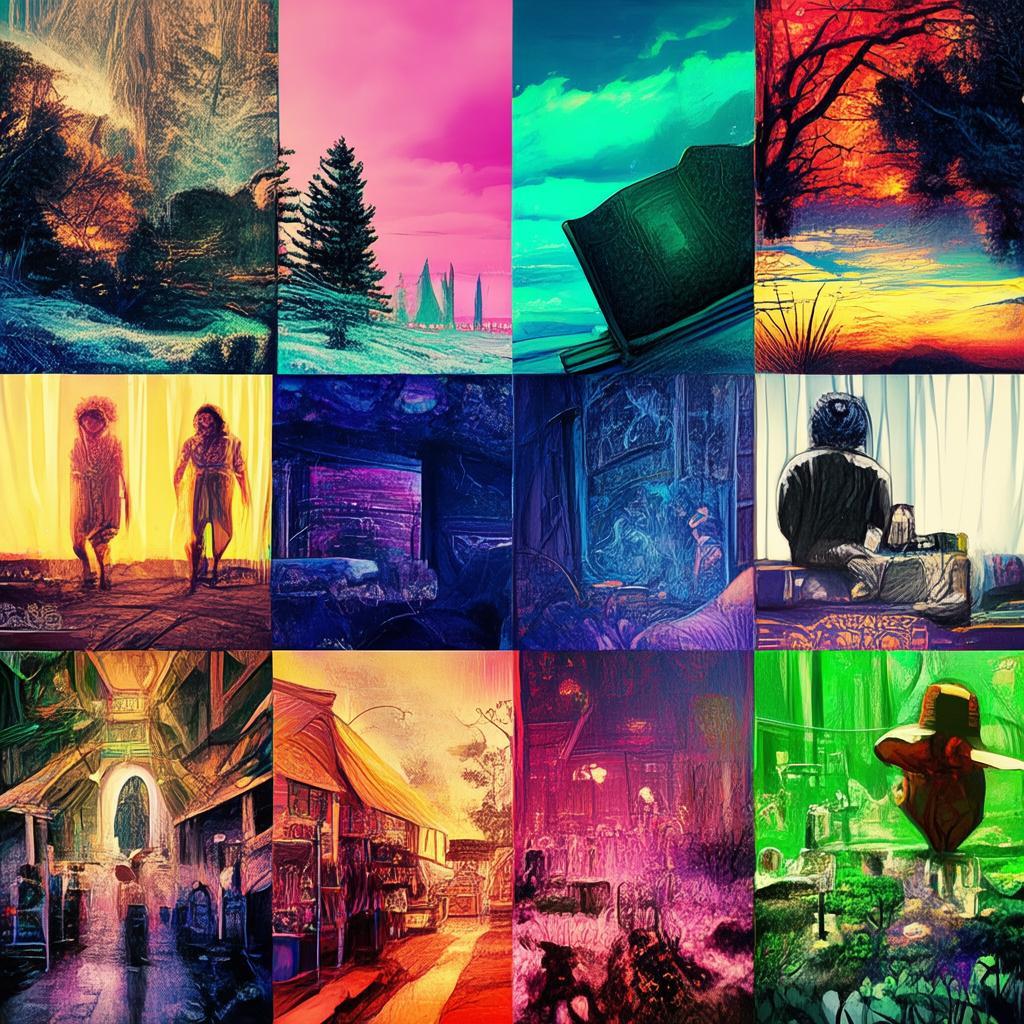Ink to Brush: The Good Story's Artistic Fusion
In the heart of a bustling city, where the hum of life was a symphony of endless chatter and the pulse of the city was a relentless drum, there lived an artist named Elara. Her fingers danced over the canvas with the grace of a maestro conducting an orchestra. Her art was a fusion of ink and brush, a testament to her belief that the power of a story was as much in the strokes as in the words.
Elara had a peculiar talent: she could hear the stories in her paintings. They whispered to her, a siren's call that pulled her deeper into their worlds. It was this talent that led her to the old, dusty bookstore on the corner of Maple and Elm streets.
The store was run by a man named Mr. Hargrove, a man who had seen more than his share of stories come and go. His eyes twinkled with a knowing gleam as he handed Elara a worn-out, leather-bound book.
"This here is something special," he said, his voice a mix of awe and mystery. "It's called 'The Good Story.' It's been in my family for generations, and I've never seen anyone like you who could appreciate its power."
Elara's heart raced. She had heard of the book, a legendary tome that was said to hold the essence of all the world's greatest stories. She knew that if she could unravel its mysteries, she might uncover the very essence of her own art.
As she opened the book, the pages seemed to come alive. They were not just ink on paper, but a tapestry of images and words that seemed to move and breathe. The story within was of a young artist named Liora, who, like Elara, had the ability to hear the voices of her art.
The story unfolded, and Elara found herself drawn into Liora's world. She felt the same passion, the same struggle to create something that resonated with the soul. But as the story progressed, Elara realized that there was something more at stake. Liora's art was not just a reflection of her soul; it was a vessel for the stories of others.
The climax of the story was a dramatic twist that left Elara breathless. Liora discovered that the stories she painted were not just her own, but the collective memories and dreams of her people. She had become the bridge between the past and the future, the keeper of their history.
Intrigued by this revelation, Elara began to explore her own art in a new way. She started to paint not just her own stories, but the stories of those around her. She painted the laughter of children, the sorrow of the elderly, and the unspoken desires of the young. Each stroke of her brush became a note in the symphony of life.
But as her art began to resonate with more people, she also began to face her own demons. She struggled with the weight of the stories she carried, the burden of being the keeper of so many lives. It was during this time that she encountered a mysterious figure who called himself the Storyteller.
The Storyteller was an enigmatic figure who appeared and disappeared like a whisper in the wind. He told Elara that the power of her art was not just in the images she created, but in the connection she forged with her audience. He challenged her to look beyond the canvas and see the people who were touched by her work.
The story of Elara's journey became a tapestry of her own life, woven with the threads of the stories she painted. It was a story of growth, of learning to balance the weight of the world on her shoulders with the lightness of her own dreams.
As the story came to an end, Elara found herself standing in front of her latest masterpiece, a painting that seemed to glow with a life of its own. She realized that the true power of her art was not in the brushstrokes, but in the hearts of those who felt its message.
The Storyteller appeared once more, this time with a knowing smile. "You have done well, Elara," he said. "You have become the bridge between the artist and the audience, the keeper of stories that will live on for generations."

Elara smiled back, her heart full of gratitude. She knew that her journey was far from over, but she also knew that she was no longer alone. The stories she painted would continue to resonate, to inspire, and to heal.
In the end, Elara's art was not just a reflection of her own soul; it was a testament to the power of storytelling, the ability of a single voice to change the world. And so, the fusion of ink to brush became a symbol of the enduring bond between artist and audience, a reminder that in the end, it is the stories we share that truly bind us together.
The tale of Elara and the Good Story was not just a story, it was a journey. It was a journey of self-discovery, of the power of connection, and of the enduring legacy of the human spirit. It was a story that could be shared, that could be felt, and that would resonate with readers long after the final word was read.
✨ Original Statement ✨
All articles published on this website (including but not limited to text, images, videos, and other content) are original or authorized for reposting and are protected by relevant laws. Without the explicit written permission of this website, no individual or organization may copy, modify, repost, or use the content for commercial purposes.
If you need to quote or cooperate, please contact this site for authorization. We reserve the right to pursue legal responsibility for any unauthorized use.
Hereby declared.









